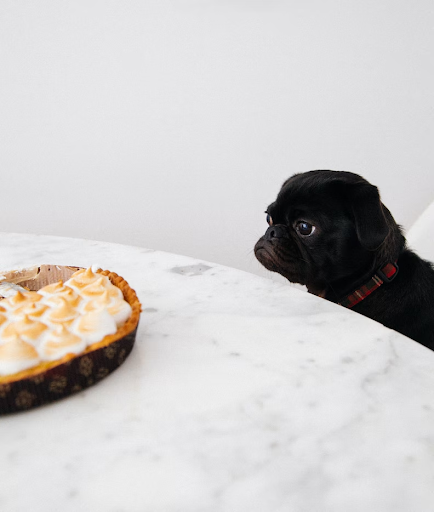How To Take Care Of A Senior Dog: Your Ultimate Guide
Table of Contents
Senior dogs no longer have the same energy as playful pups and even their favorite game of catch might feel too tiring.
While knowing how to take care of a senior dog may seem like trivial information, it is important, as it will affect a variety of things including their lifestyle and diet. Senior dogs need a little extra support from us and should not be treated the same as their younger, more robust peers.
What’s happening with my aging dog? As a dog ages they generally start slowing down, may put on weight more quickly than before, and their senses begin to dull.
It might be harder to reach for their favorite seat by the window, or they may not be able to hear us call them for their midday snack.
But fret not, although a senior dog may need a little extra paw-olding, caring for them can be a rewarding experience. It helps to know there are many easy ways you can help them too, such as:
- Feeding your senior dog a healthy and nutritious diet for maximum fuel
- Making changes around the home using items such as ramps, padded beds and indoor gripping socks to help prevent nasty slips
Let us share with you how to prepare for your dogs’ senior years, and guide you as to what to look out for as your dog inevitably gets older.
When Will My Dog Become Senior?
Dogs are considered senior at different ages depending on breed, size and lifestyle. Whilst some can exhibit senior traits as young as 5 years, others may not show common aging signs until 12.
As a quick rule of thumb, dogs can be classified as ‘senior’ at the following ages:
- Very large dogs 5-8 years
- Medium-sized dogs 7-10 years
- Small dogs 9-12 years
There is no ‘one size fits all’ and so these guidelines vary considerably between individual dogs. To be sure about your dog's senior status, you can always check with your vet.
Signs that Your Dog is Becoming a Senior
Entering the senior years can bring some challenges and many aspects of a dog’s mind and body can be affected. Potential signs to watch out for in our seniors will include:
-
Declining Senses. Dogs are less able to see, hear and smell and these senses get progressively worse over time.
-
Nuclear sclerosis. This is when the dog develops a blue-tinge to the eyes. Affected dogs can still see and this normal old age process is not to be confused with cataracts which cause blindness.
-
Gray fur. This is more noticeable in some, depending on their original fur color and coat type.
-
Irritability. This is not necessarily normal and can indicate an underlying issue such as joint or dental disease, so should be investigated if the dog is normally mellow.
-
Sleeping more. As well as spending more time in the land of nod, your older dog will need more rest and downtime during the day.
- Signs of mental decline. Some dogs experience cognitive disease as they age and may become aloof, bark for no reason, stare into space etc. Talk to your vet if you feel your dog is showing any symptoms of ‘doggy dementia’.
Yes, their behavior can give you clues on what they need but it helps to put it in words.
So if your senior dog could talk, here are three things they’d probably tell you.
'I Just Can't Move As I Used to Because My Joints Hurt'

As your canine companion ages, Arthritis and joint pain start to be a real concern so getting into the car, climbing stairs, and moving around in cold weather is difficult.
How can you help?
Start by placing warm towels over your old dog’s sore joints for a soothing effect. You can take it to the next level and get them a massage to keep their muscles soft and supple and increase blood flow to muscles and joints.
Many senior dogs have poor hearing and vision so daily tasks can quickly become new hazards. Now is definitely not the time to rearrange the entire living room.
In fact, placing stairs beside beds and couches so they don’t hurt themselves going up and down from elevated places.
We know we said don’t rearrange the furniture but you can remove large furniture items from main paths so it’s easier for a pet with poor vision to move around.
You also want to watch your step because if your pet is small they might not hear you walking towards them resulting in a nasty fall for both of you.
Lastly, slippery floors are a total nightmare for dogs with mobility issues and that’s where our Indoor Leggings come in.
They feature grippy socks with a soft comfortable fit and are a perfect solution for pets that need some help manoeuvring around.
Unlike other socks that only cover the paws, ours protect the paws and support the joints.
“A must for any IVDD survivor! We have a senior dog, 8 years post IVDD and with severe allergies. We LOVE the indoor Walkee Paws! Once again, our dog can run on the hardwood without slipping and risking injury to his back! It is also amazing to put them on his paws when he is having a bad allergy attack and goes through a "non-stop paw licking" phase - we don't have to worry about his paws getting red and irritated (though the Walkee Paws are soaked afterward!). Highly recommend!”
Deanna H., Indoor Walkee Paws with Grippy Socks
‘I Need Extra Help With Staying Active’

Keeping your old dog physically fit in their golden years is crucial.
Dr. Judy Morgan, an integrative veterinarian says, “Without good muscle tone, mobility decreases drastically. This is why pet physical therapy has become so commonly used. Joints in motion stay limber; joints not in motion get stiff.”
Although your dog may no longer manage very long walks, going outdoors every day for a little sniff here, some stretching there, and a lot of fresh air is invigorating.
We know what you’re thinking, “What are the most ideal activities?”
-
Walking—no matter what, your pup will probably still look forward to a walk. Keep it simple; take a shorter route and make lots of rest stops. Familiar routes and places help dogs with declining senses feel less anxious and confused.
-
Swimming—this is a great exercise as it doesn’t strain sore joints and it enhances cardiovascular health. Just remember to dry your furry friend as soon as they come out of any water so they don’t catch a cold.
-
Games—Give them lots of brain games like identifying different scents to keep their minds healthy and active. But be more gentle so they don’t try to jump or twist for toys.
- Socializing—Get together with another pet parent or two and have a playdate for your dogs. They might not be able to keep up with the younger pups but they’ll still enjoy being in their company.
It’s no secret, being outdoors can really boost your dog’s mood but for a senior pooch, movement is much harder so comfort is key.
Our outdoor boot leggings provide traction with little grippy rubber dots and also protect from outdoor elements like snow, cold, rain, allergens, chemicals, and dirt. The light and durable design will protect your pooch during any outdoors adventure.
Carolyn P.
'I May Have the Same Appetite, but I Just Don’t Burn Calories the Way I Used To'

Senior dog care includes lots of love in the food department but not in the way you might think.
Just as humans need less food as their metabolism slows down, dogs need less food to maintain the same weight.
Although your beloved dog may be as hungry and treat-crazed as ever, their body isn’t burning as many calories so they gain weight.
Excess weight increases their risks of having joint problems, breathlessness, and other health concerns. Dr. Judy Morgan, an integrative veterinarian explains it best:
“Fat cells actually produce hormones that increase inflammation in the body, leading to more pain. More pain means more lethargy, which means more obesity. It's a vicious cycle.”
The best senior dog food has fewer calories, more fiber, and less fat. Here are some examples:
-
Foods rich in omega-3s like fish and egg yolks.
-
Homemade bone broth strengthens bones and joints.
-
Probiotics are great for digestion so they can absorb nutrients better.
-
Pumpkin is a great source of fiber and helps with bowel issues—both constipation and diarrhea.
- Steamed or gently cooked dark greens, such as kale, broccoli, or spinach are great blood tonics as so many dogs are prone to anemia.
Overall, The "Quality of Life" scale is a really great tool to keep up with your aging dog’s needs and provide useful updates at the vet’s.
Quality of Life Scale for Dogs
| Score | Criterion |
| 0-10 | HURT Adequate pain control (including breathing ability) |
| 0-10 |
HUNGER Is the pet eating enough? Does the pet require hand-feeding or a feeding tube? |
| 0-10 |
HYDRATION Is the pet dehydrated? Does it need subcutaneous fluids? |
| 0-10 |
HYGIENE Pet needs to be brushed and cleaned, especially after elimination |
| 0-10 |
HAPPINESS Does the pet express joy/interest? Does it respond to its environment? Does the pet show signs of boredom/loneliness/anxiety/fear? |
| 0-10 |
MOBILITY Can the pet get up without assistance? Does the pet want to go for a walk? Is the pet experiencing seizures/stumbling? |
| 0-10 |
MORE GOOD THAN BAD When bad days start to outnumber good days, the quality of life becomes compromised and euthanasia needs to be considered |
| Total |
A total of 35 points is considered acceptable for a quality of life score |
The Better Bootie for Your Best Buddy
As your senior dog ages, the last thing they need is difficulty moving around the house or socks that keep falling off.
What they really need is more time with you exercising, cuddling, and enjoying fun activities while feeling comfortable and fashionable too.
That’s why we created Walkee Paws, the world’s first all-in-one dog boot leggings designed to protect your pup from the ruff stuff outside and the slippery surfaces inside.
Timothy, Indoor Walkee Paws with Grippy Socks
Shop Walkee Paws
